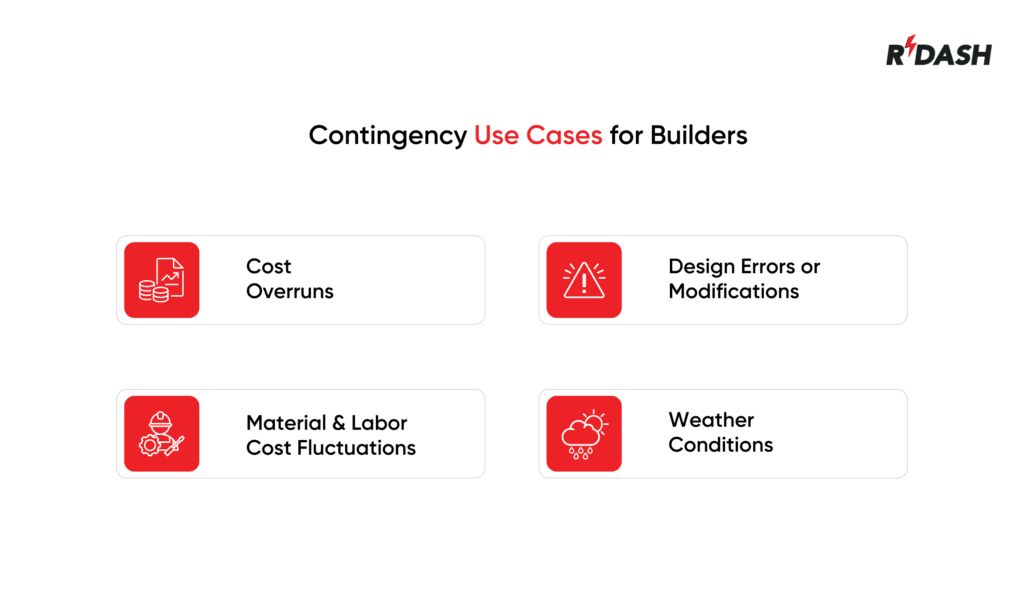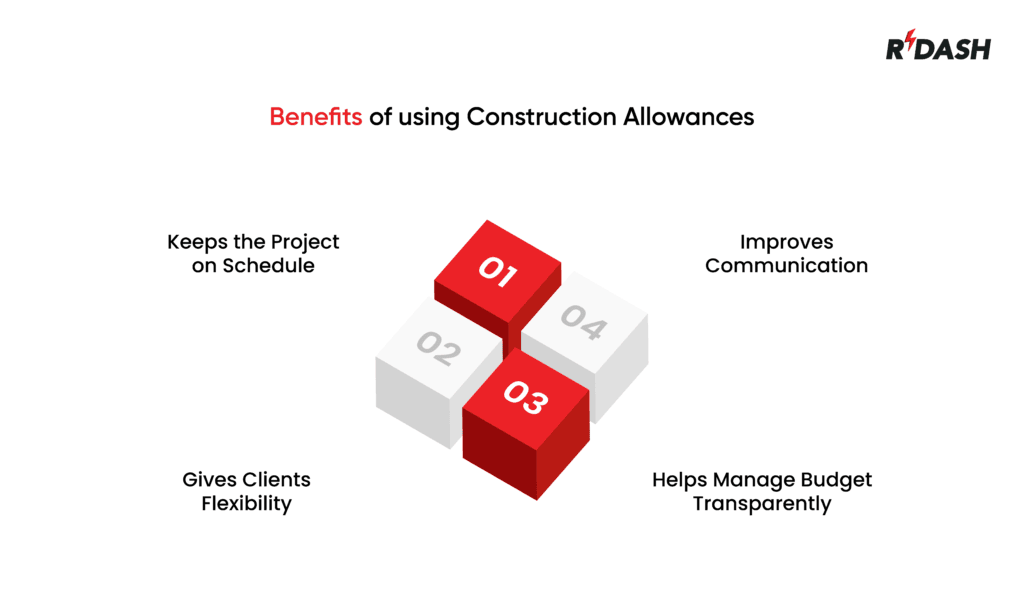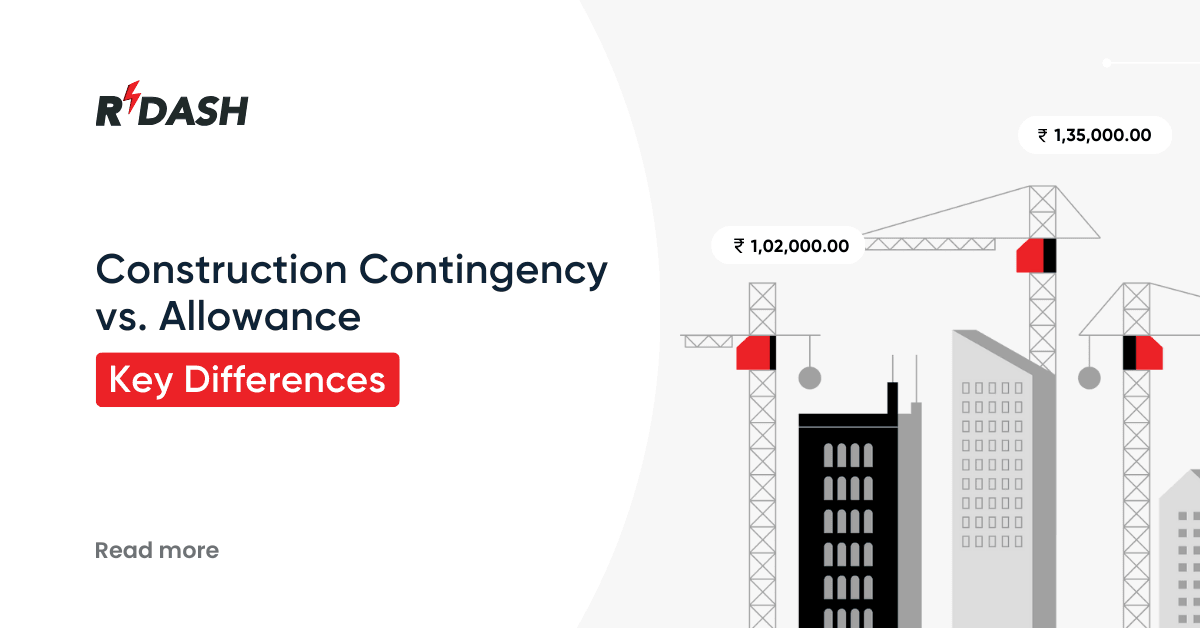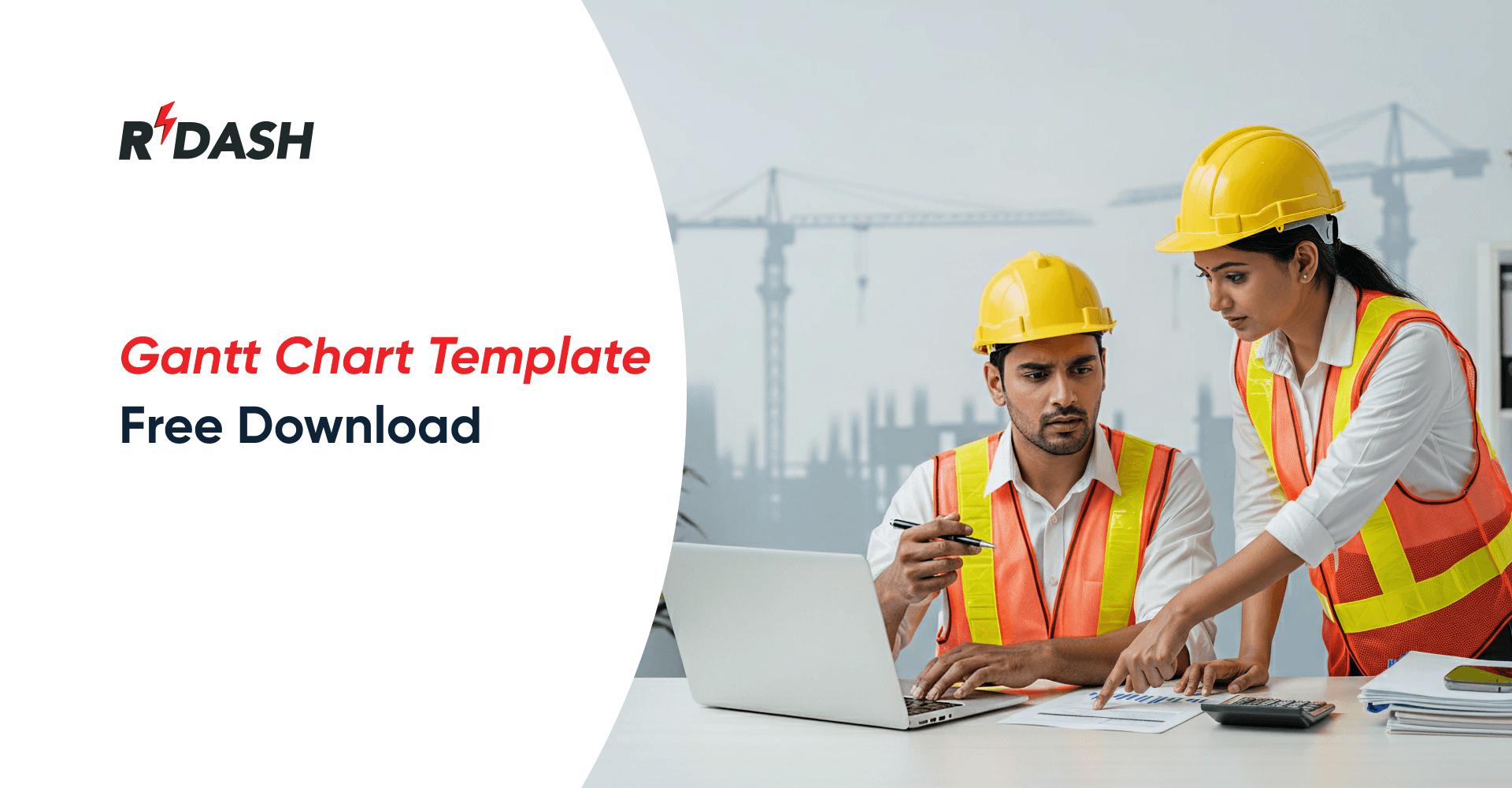What is construction contingency?
A construction contingency is a reserved amount of money in a project budget that is kept aside to cover unexpected costs. In most construction projects, even with detailed planning, surprises can happen. These could involve adjustments to designs, unexpected site issues, project delays, or rising costs. Contingency acts as a safety buffer to manage such surprises without affecting the entire budget or timeline.
For example, if you are building an office and find a plumbing issue that wasn’t visible during the initial inspection, the cost to fix it can come from the contingency fund. This helps avoid asking for more money from the client or stopping the work midway.
A contingency typically ranges from 5% to 10% of the overall project cost, based on how large or complicated the project is. It is especially important in large or long-term projects where risks are higher.
However, contingency should not be used for mistakes due to poor planning or lack of coordination. It should only be used for unforeseen and genuine needs that were not expected during the planning stage.
What is construction allowance?
A construction allowance is an estimated amount included in the budget for items or tasks that haven’t been finalized when the contract is signed. This means the builder includes an estimated cost for a particular item until the client makes a final decision.
Let’s say the client hasn’t chosen the type of kitchen tiles yet. The builder may include an allowance of ₹150 per square foot for tiles in the budget. Once the client selects the exact tiles, the cost is adjusted – if the tiles cost more than ₹150, the client pays the extra. If they cost less, the balance is deducted from the total bill.
Allowances help projects move forward without waiting for every design choice to be finalized. They give clients flexibility while keeping the budgeting process organized.
There are different types of allowances, such as:
- Material allowance (e.g., tiles, paint, lighting)
- Labor allowance (e.g., for tasks where the time or cost may vary)
- Equipment allowance (e.g., HVAC systems or appliances)
Contingency use cases for builders
Builders use contingency funds to deal with unexpected issues that may arise during the construction process. Below are some common situations where contingencies are helpful:

1. Cost Overruns
Even after estimating carefully, actual expenses can go over the planned budget. This might happen if suppliers raise prices or if extra materials are needed. Contingency funds help cover these additional costs without needing to revise the entire budget.
2. Material and Labor Cost Fluctuations
The cost of raw materials like steel, cement, or wood can rise due to market conditions. Similarly, labor costs may go up because of high demand or shortage of skilled workers. These price changes can put pressure on the budget, and contingencies provide financial support in such cases.
3. Design Errors or Modifications
Sometimes, an error in the architectural or structural design may be discovered during construction. Or the client may request a design change after work has started. Both situations can lead to rework, extra labor, or new materials, which cost money. Contingency helps manage these added expenses without stopping the project.
4. Weather Conditions
Construction projects often face delays due to bad weather, especially in regions with heavy rain or extreme heat. Such delays can lead to extra spending on labor or machinery. Contingency funds help absorb these impacts so that the project doesn’t go off track.
Why use construction allowances?
It’s normal for certain materials or product choices to remain open at the beginning of a construction project. The client might still be choosing between different flooring options, lighting designs, or bathroom fittings. Instead of delaying the entire project until every detail is finalized, construction allowances are used.
A construction allowance is a pre-estimated amount included in the budget for items that haven’t been selected yet. This allows the work to move forward smoothly while giving the client more time to make final decisions.
Benefits of using construction allowances:

- Keeps the Project on Schedule
Waiting for every choice to be finalized can delay the project. Allowances let construction continue while decisions are still pending. - Gives Clients Flexibility
Clients may want to explore more design options or compare product prices. Allowances provide that space without slowing down progress. - Helps Manage Budget Transparently
By clearly showing estimated costs for undecided items, allowances avoid confusion later and make budget adjustments easier. - Improves Communication
Builders and clients can agree upfront on a basic price range. This approach prevents unexpected costs when the final item is selected.
Allowances are not random guesses, they are based on realistic market prices and the project’s quality expectations. If the client chooses something more expensive than the allowance, they pay the difference. If it’s cheaper, the extra amount is deducted from the total cost.
Types of construction allowances
Construction allowances are usually divided into different categories depending on what they are used for. Here are two common types:
1. Installation Allowance
This allowance covers the labor cost for installing items whose exact details may not be known yet. For example, if the type of air conditioning system hasn’t been finalized, the builder may include an installation allowance based on a standard system.
After the system is finalized, its true installation cost is matched against the budgeted allowance. If extra work is needed (like installing ducting for a larger system), the client may need to pay the difference.
Common use cases:
- Electrical fittings installation
- Lighting system setup
- Appliance installations
- HVAC system installation
2. Material Allowance
A material allowance is for physical items or materials that are not yet selected. This is the most common type of allowance used in construction.
For example, if tiles for the bathroom haven’t been selected, a material allowance of ₹200 per square foot might be included. Once the tiles are finalized, the real cost is matched with the allowance. Any difference is adjusted in the final bill.
Common use cases:
- Floor tiles or wall finishes
- Kitchen countertops
- Bathroom fittings
- Light fixtures
- Paint types or colors
Calculating construction contingency
In every construction project, unexpected costs are almost guaranteed. This is why setting aside a construction contingency is essential for managing unforeseen expenses. It helps protect the budget when things don’t go exactly as planned.
So, how do you calculate it?
While there’s no strict formula, contingencies are generally estimated as a percentage of the full project budget. Here’s a common approach:
- For small or simple projects: 5% of the total cost
- For medium-sized projects: 7% to 10% of the total cost
- For large or complex projects: 10% or more, depending on the level of risk
Example:
If your total construction budget is ₹1 crore and you choose a 7% contingency, you’ll set aside ₹7 lakhs for unexpected costs.
This amount should only be used when something truly unexpected happens, like a sudden price increase in materials, design changes, or delays due to weather.
A well-planned contingency ensures that the project doesn’t stop mid-way and helps reduce stress when problems come up.
How to create construction allowances
Construction allowances are added to the budget for items that haven’t been fully decided yet. They help you move ahead with construction even if some choices are still pending.
Here’s a simple step-by-step way to create them:
Step 1: Identify Allowance Items
Start by listing all items or services that are not yet finalized. These can include:
- Flooring material
- Lighting fixtures
- Kitchen fittings
- Bathroom accessories
Step 2: Research Price Ranges
For each item, research average market prices based on the quality or style the client is likely to choose. Choose a realistic estimate – not too high, not too low.
Step 3: Add to Budget
Include the estimated price as an allowance in the budget. Clearly mention that the final amount may change depending on the client’s selection.
Step 4: Communicate with the Client
Explain to the client how allowances work, if their final choice costs more than the allowance, they pay the extra; if it’s less, they get a refund or adjustment.
Step 5: Keep Records
When the actual items are selected, update the budget and clearly show the difference between the allowance and actual cost.
Allowances keep the project flexible and help avoid delays when clients take time to decide on certain items.
Conclusion
Though they both deal with project costs, contingencies and allowances are very different in purpose:
| Feature | Construction Contingency | Construction Allowance |
| Purpose | Covers unknown or unexpected costs | Covers items not yet selected |
| Planned for | Risks and surprises | Pending decisions |
| Control | Used by contractor or builder | Controlled by client based on their choices |
| Adjustments | Rare and only when necessary | Common and expected as part of the process |
In simple terms:
- Contingency is for the unknown.
- Allowance is for the undecided.
Using both wisely helps keep construction projects smooth, transparent, and within budget. Together, they make your project stronger and more prepared for anything that might come up.






